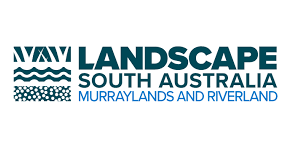
Background
Brian Caddy has been farming in the Riverland for almost 60 years. In 1973, Brian established Limestone Ridge Vineyard on his Riverland property, first planting Cabernet Sauvignon and then four years later Chardonnay, one of the first Chardonnay plantings in the region. The Chardonnay has now been grafted over to Fiano – a Mediterranean variety well suited to the Riverland climate.
Growing wine-grapes in a region where the average annual rainfall is less than 300 mm, Brian has a deep understanding of the importance of good water management. During his time as a wine-grape grower in the Riverland, he has experienced water restrictions as well as significant fluctuations in grape and water prices.
During the 2021/22 season, Brian participated in a SARDI/AWRI irrigation emitter uniformity benchmarking project funded by Landscapes SA, and the results were surprising. This case study explores Brian Caddy’s current irrigation system monitoring and maintenance program, his vineyard’s emitter uniformity results and changes he is planning to make to his monitoring and maintenance program as a result of these results.
Brian’s irrigation water for wine-grape production is sourced from the River Murray. The water is generally high quality but brings with it suspended clay and organic material. Brian, like 85% of the wine-grape growers in the Riverland, converted from furrow irrigation to drip irrigation. This conversion, undertaken in 2004, significantly improved his water use efficiency but regular maintenance is required to keep the system working efficiently.
Brian Caddy ’s irrigation infrastructure and maintenance
Limestone Ridge has an 18-year-old irrigation system with pressure-compensating drippers, which is maintained with an extensive annual maintenance program. The quality of the water determines how often Brian needs to flush the system. In high-flow years, the amount of silt and organic matter in the river water increases and additional flushing is required. “If I don’t flush enough, then my drippers will become blocked and inefficient” says Brian.
Brian’s irrigation maintenance program involves flushing his irrigation sub-mains and laterals with hydrogen peroxide ten times during the season. He follows the flushing procedure outlined in the AWRI irrigation maintenance video, which is a three-stage process involving thoroughly flushing the mains, sub-mains, and laterals with water; injecting hydrogen peroxide into the system and leaving the solution in the lines for 1-2 days; and then flushing the system again with water.
The pre-and post-hydrogen peroxide water flushes take two hours and cost approximately $43.98 (Electricity cost: 8.9 kWh @ 26.576 cents per kWh = $23.65. Water cost: 81 kL @ $25.10 ML = $20.33). Brian reduces his irrigation maintenance costs by flushing his irrigation lines on the weekend when off-peak power is cheaper.
With the increased inflows into the Murray River system due to La Niña weather conditions and full dams upstream, Brian is anticipating a drop in river water quality. To manage this, he is currently installing an automatic injector in the main line, just after his filters, to automatically inject hydrogen peroxide into his irrigation water during each irrigation application.
In addition to grafting to more heat-tolerant varieties and installing automatic hydrogen peroxide injectors to improve the water use efficiency of his vineyard, Brian is also refurbishing his pump house, installing a variable speed pump, additional filters, stainless steel piping and new electronics. “All this is to try to minimise our power use and have a more flexible and efficient irrigation system”, says Brian.
Benchmarking project results
Despite Brian’s extensive irrigation maintenance program, results from the SARDI/AWRI irrigation emitter uniformity benchmarking project revealed that the system was performing below standard, with high pressure variation (90%) and high flow variation (23%). In a high-performing system, there will be less than 10% variation in dripper discharge throughout the value unit (±5%). In a system operating with 25% variation, some vines may be receiving 11.5% less water than they need, and others may be receiving 11.5% more irrigation. Under-irrigation can cause yield reductions and over-irrigation can cause nutrient leaching and losses of water through deep drainage.
Pressure-compensating drippers are designed to provide the same discharge over a wide pressure range. They are effective at reducing and controlling dripper flow at high pressures but cannot increase the flow if pressures are too low. After some investigation, it was discovered that the pressures were very low (65 kPa), which increased the flow variation. When the pressures were adjusted to 174 kPa the irrigation system performance improved significantly.
Table 1. Limestone Ridge irrigation emitter uniformity benchmarking project results
| Pressure variation (%) | Flow variation (%) | |
| Limestone Ridge pre-check | 90 | 23 |
| Limestone Ridge post-pressure adjustment | 34 | 6 |
Conclusions
The results of this benchmarking project highlight the need for both good irrigation system maintenance and system monitoring. In response to these results, Brian has implemented an irrigation system monitoring procedure following the guidelines of Giddings (2004) outlined in the AWRI irrigation monitoring video. The monitoring procedure involves checking dripper pressures and flows at several points in each block, at regular intervals throughout the season, and adjusting the pressures as required to maintain consistent flows.
Find out more
For more information and resources on irrigation monitoring and maintenance, including two ‘how to’ videos, visit the AWRI’s water management webpage.
Acknowledgement
This work was funded by Landscapes SA. The AWRI and SARDI would like to thank Brian Caddy for taking part in the project and for generously sharing his knowledge and experience regarding irrigation monitoring and maintenance.


